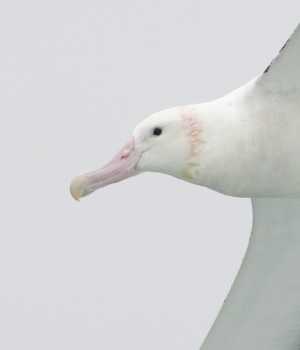Julien Collet (Centre d’Etudes Biologiques de Chizé, France) and colleagues have published in the journal Behavioral Ecology on differences in the attraction levels of two albatross species to fishing vessels.
The paper’s abstract follows:
“Anthropogenic food resources have significantly modified the foraging behavior of many animal species. They enhance large multi-specific aggregations of individuals, with strong ecological consequences. It is challenging to predict how individuals or species can differ in their reaction to these resources. For instance, there are wide variations in seabird species abundance behind fishing boats, and individual variations in interaction rates. Whether this is reflecting variations in fine-scale encounter rates or rather variations in attraction strength is poorly quantified. Here we compare the response of Wandering (WA) and Black-browed (BBA) albatrosses to fishing boats operating in sub-Antarctic waters. We use GPS tracking data from both birds and boats (Vessel Monitoring System). Attraction distances were similar between the 2 species (up to 30 km). BBA foraged further from fishing grounds and encountered boats less frequently than WA, but once they encountered a boat BBA were more strongly attracted (80% vs. 60% chance) and had a higher level of active interaction, compared to WA. Furthermore, in the absence of boats, BBA were rarely observed foraging over the habitat where the fisheries mainly operate, in contrast with WA. We thus report qualitative and quantitative differences in the response of these 2 species to the same fishing fleet. WA, the larger, more dominant and more generalist species was unexpectedly less attracted to fishing vessels. Comparing our results with previously published studies, we suggest that energetic requirements of individuals may be a crucial predictor for assessing risks of interactions with anthropogenic food resources.”

A Wandering Albatross at sea, photograph by John Chardine
Reference:
Collet, J., Patrick, S.C. & Weimerskirch, H. 2017. A comparative analysis of the behavioral response to fishing boats in two albatross species. Behavioral Ecology DOI: https://doi.org/10.1093/beheco/arx097.
John Cooper, ACAP Information Officer, 01 August 2017

 English
English  Français
Français  Español
Español